The Cruikshank manuscripts from the Merkle Collection, first digitized and made available here, range in dates from 1830 to 1878 and include letters, draft sketches (or studies), ephemera, and doodles. Cruikshank’s letters illuminate his personal life, touching on topics including his etching work, conversations with friends, publishers, and illustrators; and his responses to social gatherings and events. Cruikshank’s address at 263 Hampstead Road places him in Camden Town, adjacent to Regent’s Park, which became open to the public in 1841. This part of London began to develop as railway construction across the city connected the different boroughs. A Royal Society of Arts blue plaque now commemorates Cruikshank in Camden Town.

The letters in this collection offer a unique view into Cruikshank’s life and work. While some of the letters reference the more mundane tasks of daily life, like responding to invitations to social events and scheduling business meetings, other manuscripts and letters within this newly digitized collection provide the world with insight into Cruikshank’s creative process and artistic production.
Cruikshank wrote to other artists like William Richardson (1842-1877) and discussed art dealers like Charles A. Howell (1840-1890), who was famously regarded as a blackmailer and double dealer. Cruikshank also wrote about Charles Dickens and his artistic contributions to famous works like Oliver Twist, which sheds light on the deterioration of Cruikshank and Dickens’ relationship.

Some undated materials in the collection, like a ticket to the Shakespeare Tercentenary and a broadside for the New York State Lottery, demonstrate how Cruikshank brought seemingly mundane advertisements to life through his unique artistic vision.
This collection also features studies by Cruikshank that would later develop into fully formed engravings within larger works. The most notable of these studies include an original watercolor for Rambles in the Footsteps of Don Quixote, published in 1837 and written by Henry D. Inglis (1795-1835), a Scottish travel writer and journalist. Within the watercolor sketch, Cruikshank adjusts the features of the landscape, the number of people in the scene, and the orientation of the figures to create what would eventually become the final etching published in Inglis’ book.
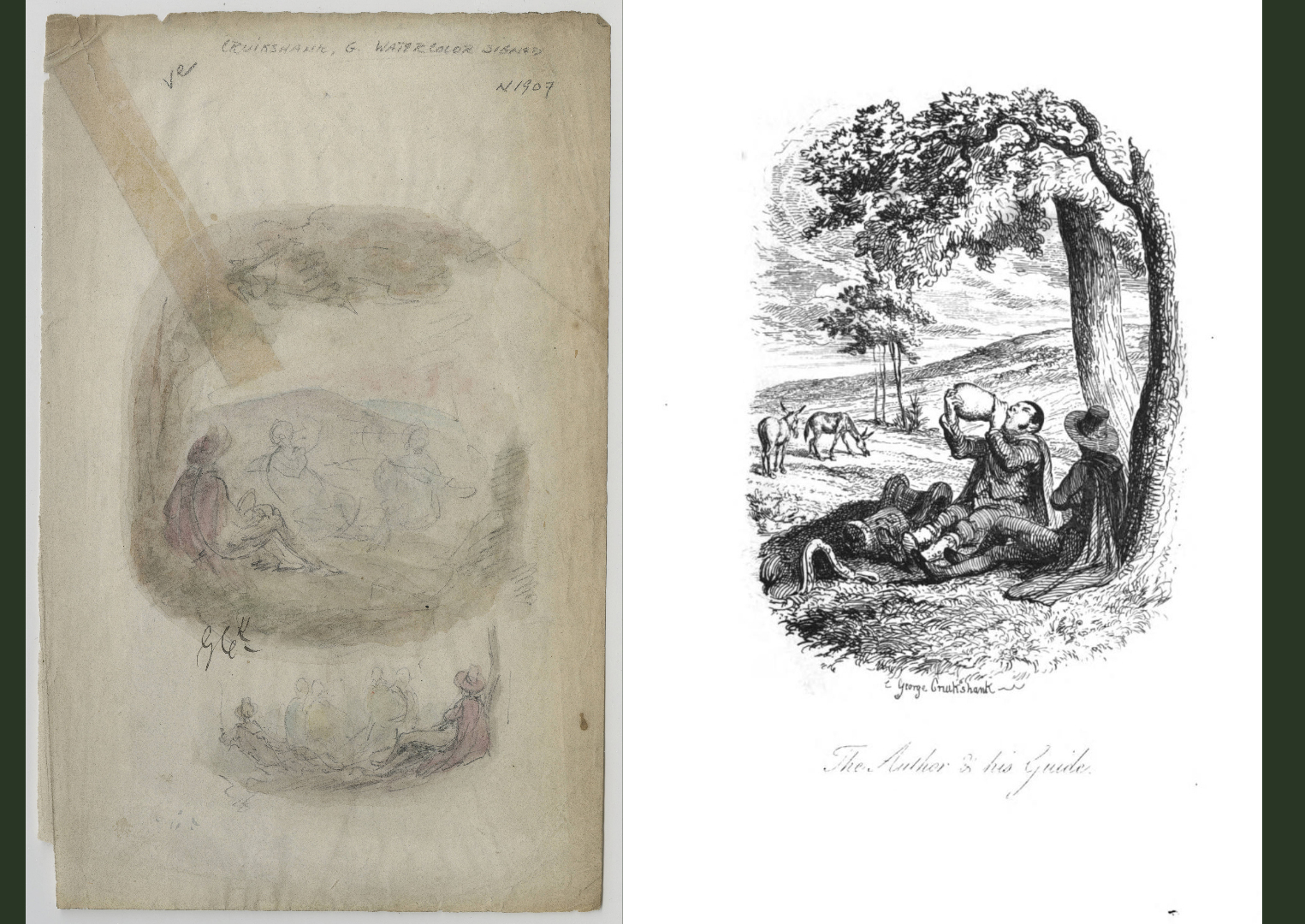
This collection of manuscript material and ephemera demonstrates the great degree to which Cruikshank’s art and the causes he supported pervaded his everyday life and highlights both his commitment to his craft and his own sense of urgency for artistic production.
Click on the images below to learn more





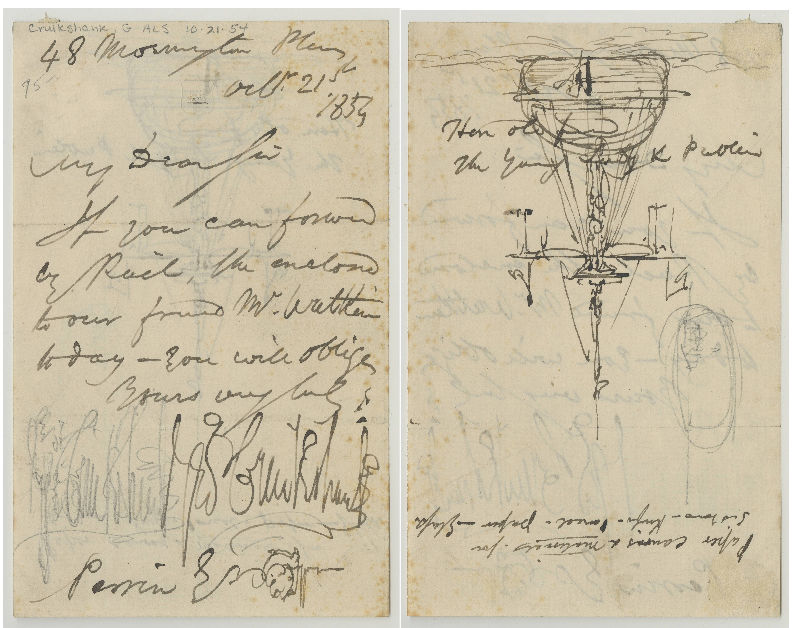
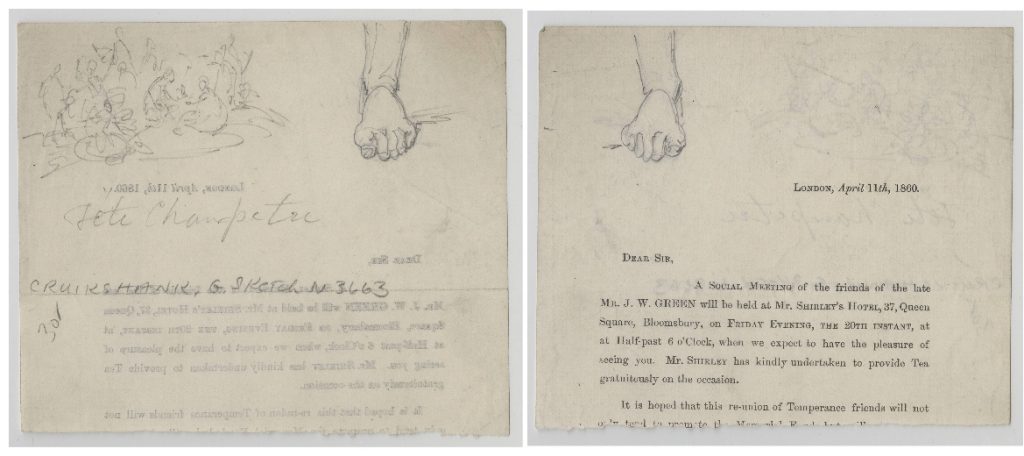


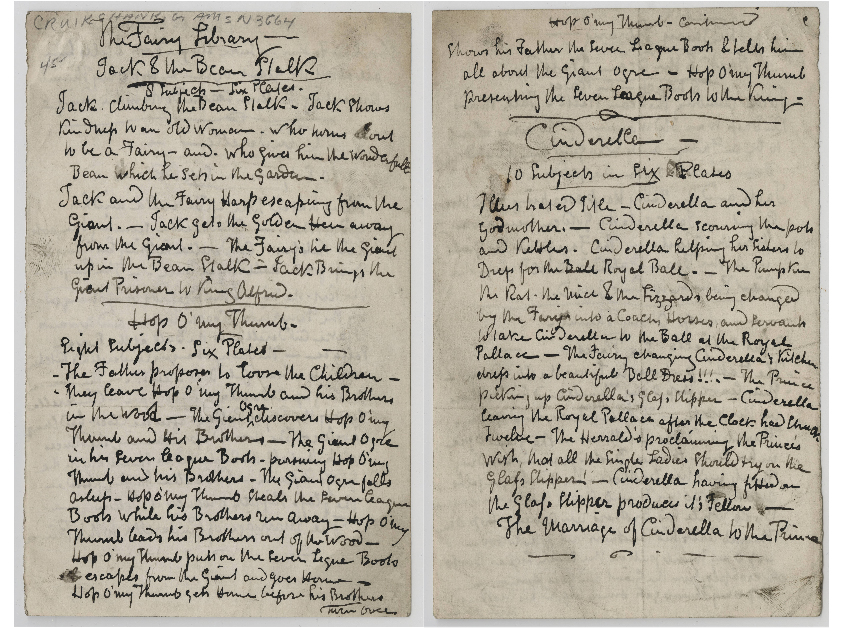

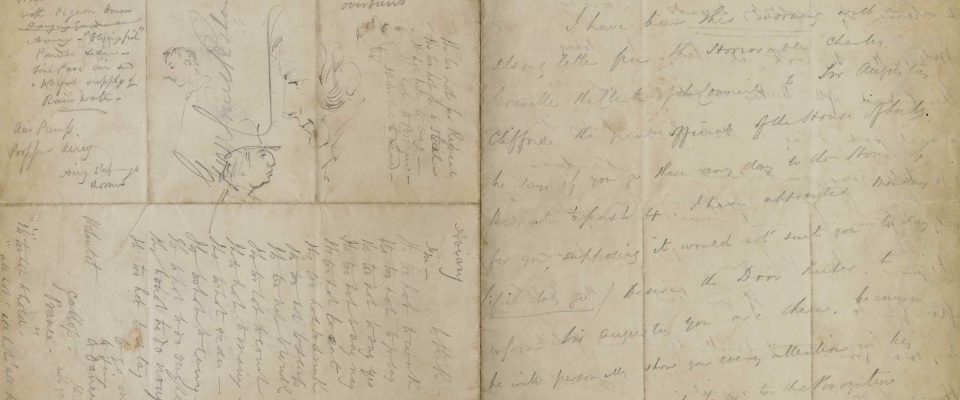
 Albin O. Kuhn Library & Gallery
Albin O. Kuhn Library & Gallery